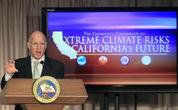
Not only does the bill essentially double California's energy efficiency goals, it does so in by making a number of very important changes in how we approach energy efficiency in the state. These changes, if implemented, represent the beginnings of a major paradigm shift.
First, SB-350 specifically changes the way that energy efficiency is counted. Rather than rely on a series of ex-post studies, including a stack of regulation that includes considerations for energy code and attempts to account for “free ridership” and other subjective impacts, SB-350 is clear that “energy efficiency savings and demand reduction reported for the purposes of achieving the targets established pursuant to paragraph (1) shall be measured taking into consideration the overall reduction in normalized metered electricity and natural gas consumption where these measurement techniques are feasible and cost effective.”
Additionally, this new law defines “energy efficiency savings” as “reducing the quantity of baseline energy services demanded” and includes both the adoption of efficiency measures and practices (such as behavior). The law also directs that the CPUC “achieve greater energy efficiency in existing residential and nonresidential structures that fall significantly below the current standards in Title 24 of the California Code of Regulations.” In essence, this means that what’s important is results at the meter, not how one gets there, and that those results are the difference between the buildings’ baseline use before interventions and consumption levels during the performance period.
While this may seem like commons sense to many people, in reality, it is a huge shift from current practices, one that promises to standardize how efficiency is measured based on meter data, and evaluate it based on straight reductions in demand. More importantly, it has the potential to finally put in place a standardized and replicable system for measuring efficiency as capacity in a way that markets can treat as a reliable demand-side energy commodity. These new directives are also closely aligned with the process underway to implement the residential CalTRACK system based on the Open EE Meter.
Building on this data-driven approach, SB-350 goes on to “Authorize pay for performance programs that link incentives directly to measured energy savings. As part of pay for performance programs authorized by the commission, customers should be reasonably compensated for developing and implementing an energy efficiency plan, with a portion of their incentive reserved pending post project measurement results.” Later SB-350 goes on to specifically state that “Incentive payments shall be based on measured results.”
This approach, is similar to a pay-for-metered performance pilot that was proposed to the CPUC by NRDC and TURN, and supported as well by PG&E, which said in their CPUC filing that "PG&E supports a residential pay-for-performance pilot that we understand NRDC will propose in its workshop comments. This pilot design has the potential to facilitate comprehensive upgrades while simultaneously minimizing implementation costs through leveraging private capital."
Though it received less attention, another bill that passed last week was AB-802, which also specifically moves the State towards meter-based energy efficiency, in addition to its primary goal of implementing benchmarking across the State. This law directs the California Public Utilities Commission (CPUC) “determine how to incorporate meter-based performance into determinations of goals, portfolio cost-effectiveness, and authorized budgets, the commission, in a separate or existing proceeding, shall, by September 1, 2016, authorize electrical corporations or gas corporations to provide financial incentives, rebates, technical assistance, and support to their customers to increase the energy efficiency of existing buildings based on all estimated energy savings and energy usage reductions, taking into consideration the overall reduction in normalized metered energy consumption as a measure of energy savings.”
In addition AB-802 addresses the festering issue of Code Baseline in California, which has meant that the CPUC can only pay utility incentives for above CEC Title24 Energy Code, which represent an existential problem as code is increased to net zero energy, directing that “programs shall include energy usage reductions resulting from the adoption of a measure or installation of equipment required for modifications to existing buildings to bring them into conformity.”
Taken as a whole, these changes represent a fundamental shift in California’s approach to energy efficiency. As these changes come into effect, we will be moving from a programmatic regulated approach to efficiency to markets that treat energy efficiency as a capacity resource and rely on private capital and innovation to create the business models necessary to achieve the scale required to hit Governor Brown’s goals.
While largely overlooked, these rather weedy changes to how energy efficiency is measured, and the directive to the CEC and CPUC to begin piloting pay-for-performance approaches to measured savings represent a true paradigm shift. Supported by an unusually diverse group of stakeholders, including environmental advocates, local governments, industry, utilities, and ratepayer advocates, these landmark bills represents a major advance and new opportunity for energy efficiency in California.

 RSS Feed
RSS Feed